We utilized previously described boil preps and qPCR to assess the contamination levels in Pfizer’s monovalent vaccines. Contamination levels are as significant as the bivalent vaccines and have reached many more people.
Introduction
Bivalent vaccine uptake is significantly reduced compared to the monovalent vaccines. This leads one to question if the previously described dsDNA contamination in the bivalent vaccines also exists in the monovalent vaccines.
Methods
Vials were unopened and dated from 3/4/2022. The instructions call for dilution prior to use based on the age of the patient. The orange cap tubes are specific for 5-12 year olds. The label claims, after dilution with 1.3ml of saline there should be ten 200ul doses so ~700ul of vaccine exist in the vial prior to dilution. qPCR boil preps were performed without dilution. The minor dilution would only move the qPCR results 1-2 CTs. The PCR methods used for this study are described previously. The boil method used in this study is described previously.

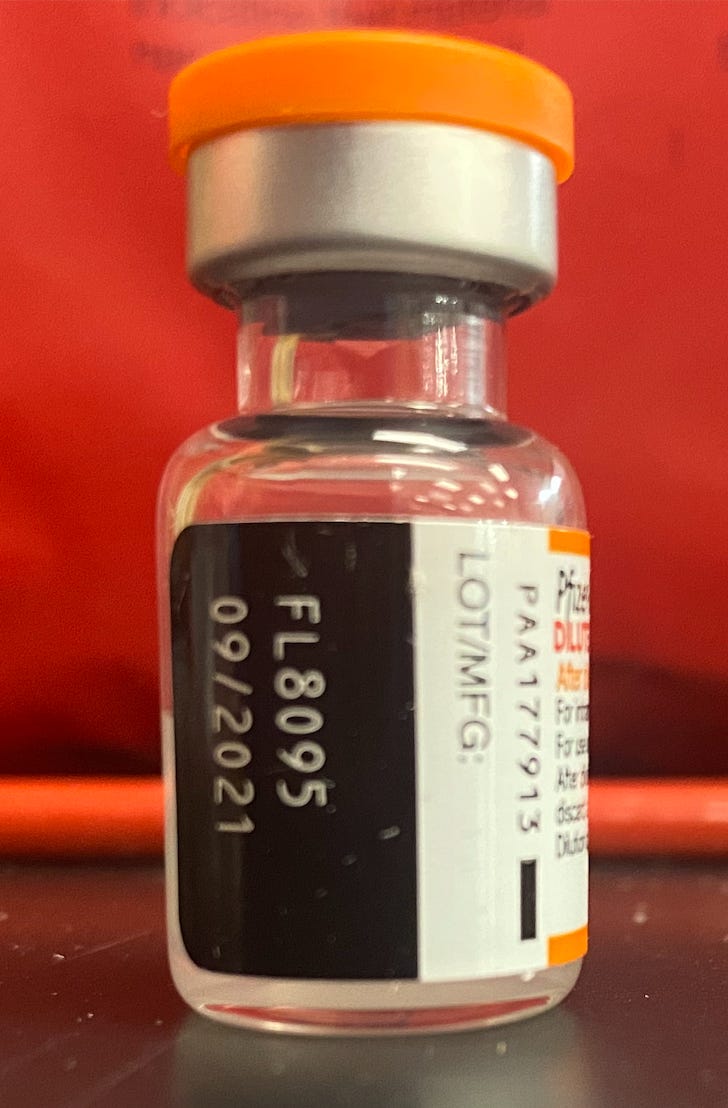
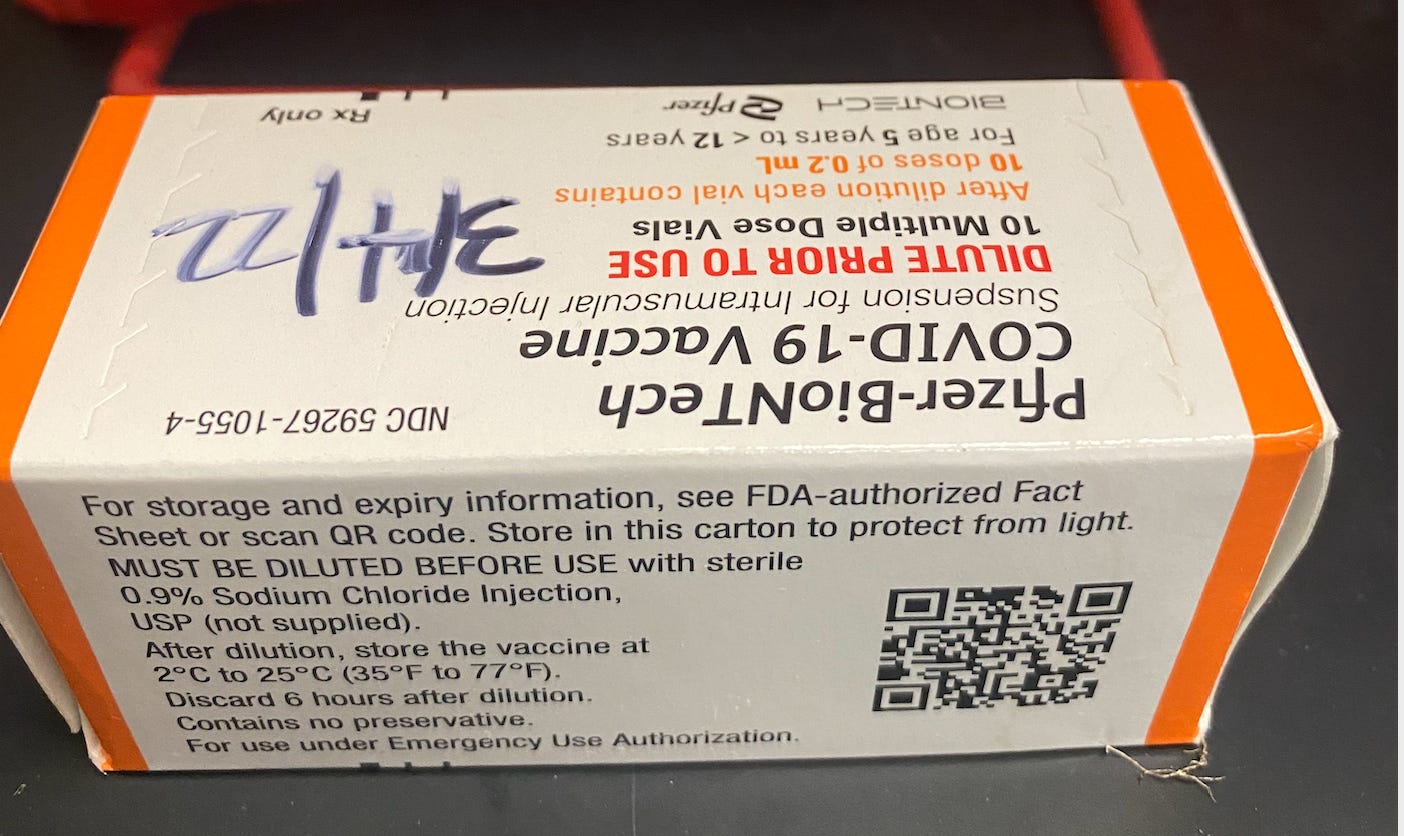
Results
qPCR only amplifies DNA and shows equal CTs (22) for the spike and vector sequences.
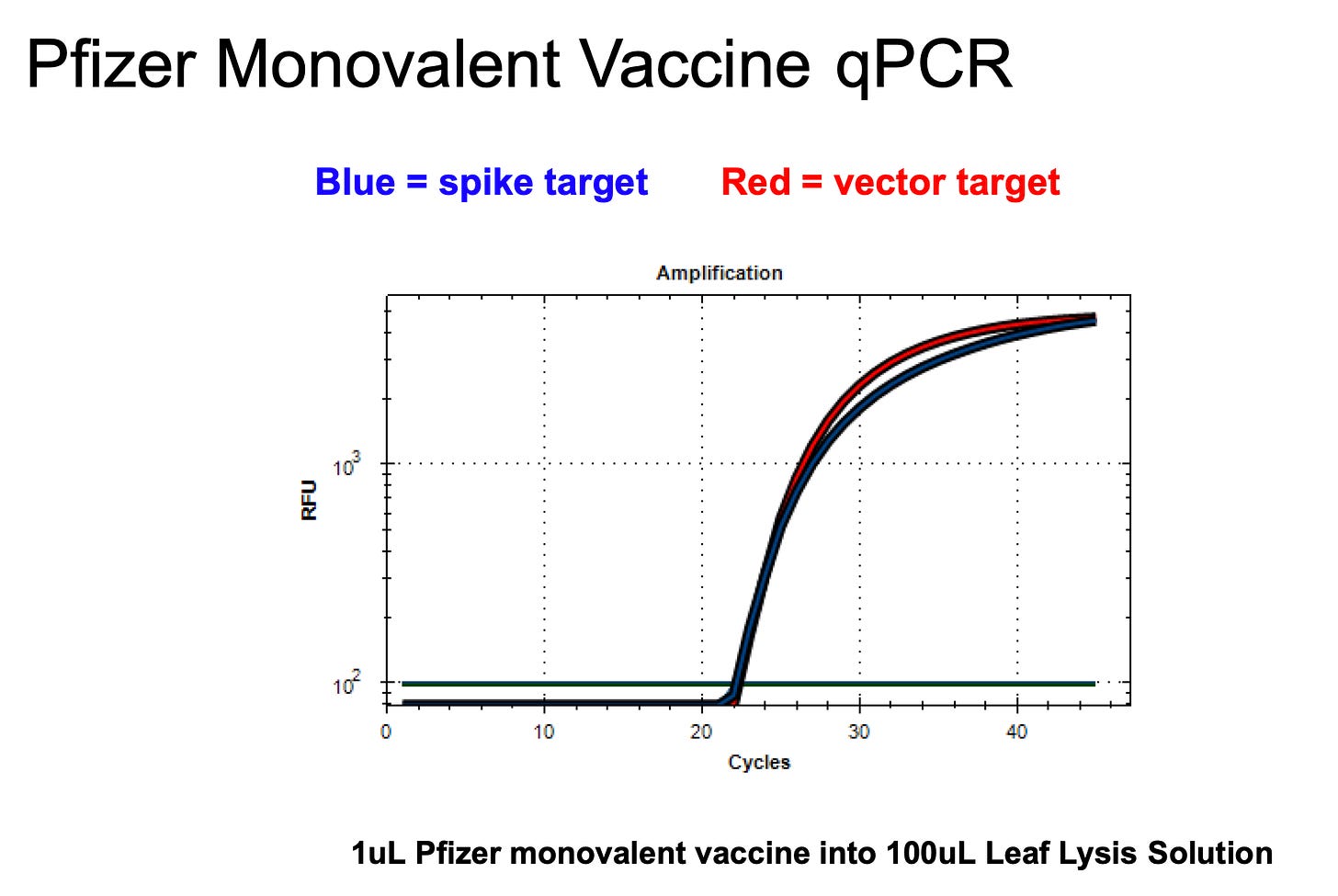
RT-qPCR amplifies both DNA and RNA shows a shifted CT for the vector (CT 22→19). This implies there is some vector RNA or the 10 minute RT step used to turn DNA into RNA is enhancing the RT-qPCR signal for all targets. Given the Plasmid DNA is isolated from E.coli with methods that likely eliminate RNA with RNases, it is more likely the CT offset is a result of the RT step in RT-qPCR.
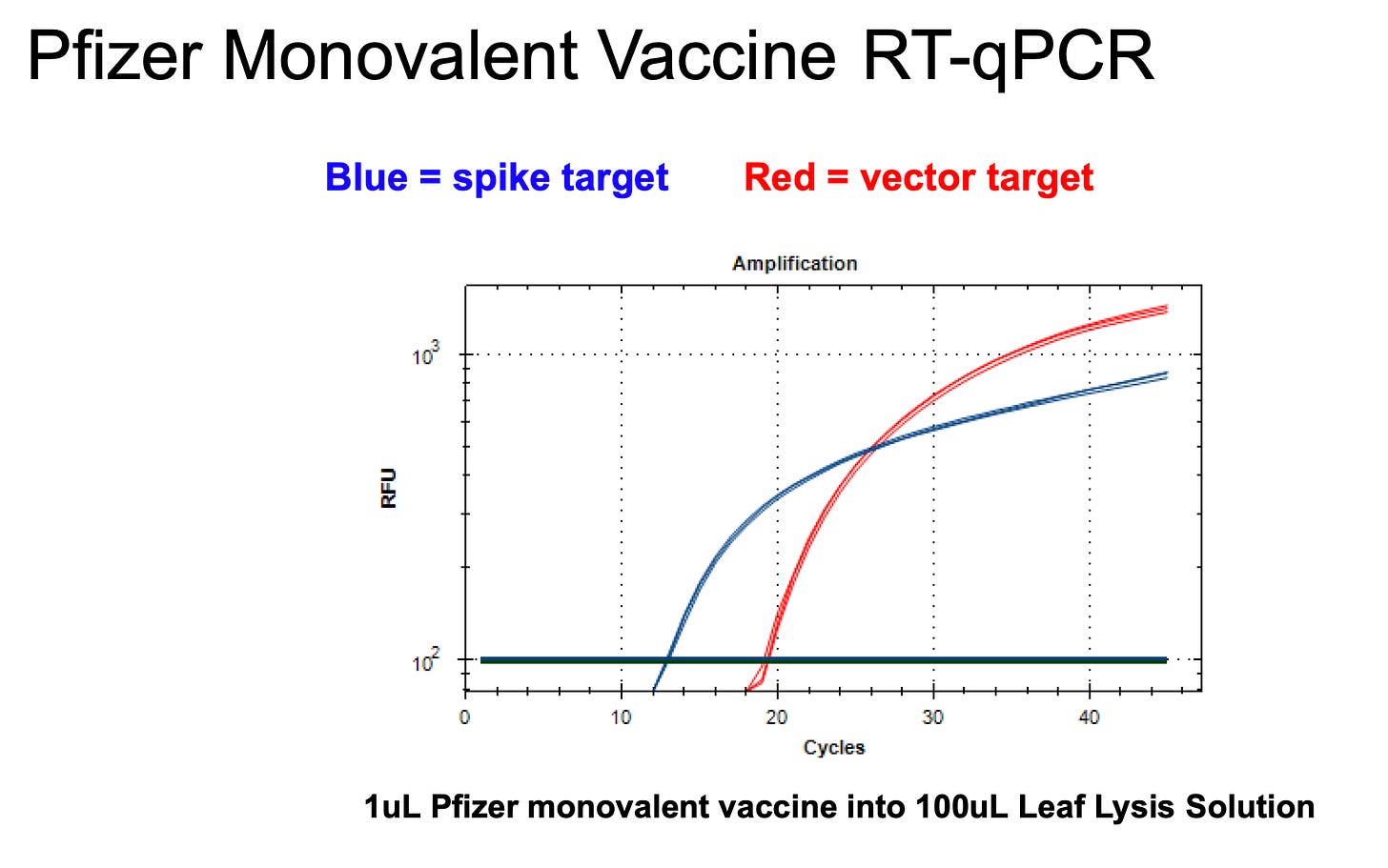
Replicated from our previous study on the bivalent vaccines. These results in Figure 3 (on the left DNase I ) chart were generated using a different DNA prep and dilution than the boil prep used in this study. They were also from vials that did not have any dilution instructions so the CTs are delayed compared to the monovalent vaccines as expected. The CT offset on the DNase I chart (on the left ) with the Pfizer untreated Spike (blue) and Origin (green) appears to be about 5-7 CTs.
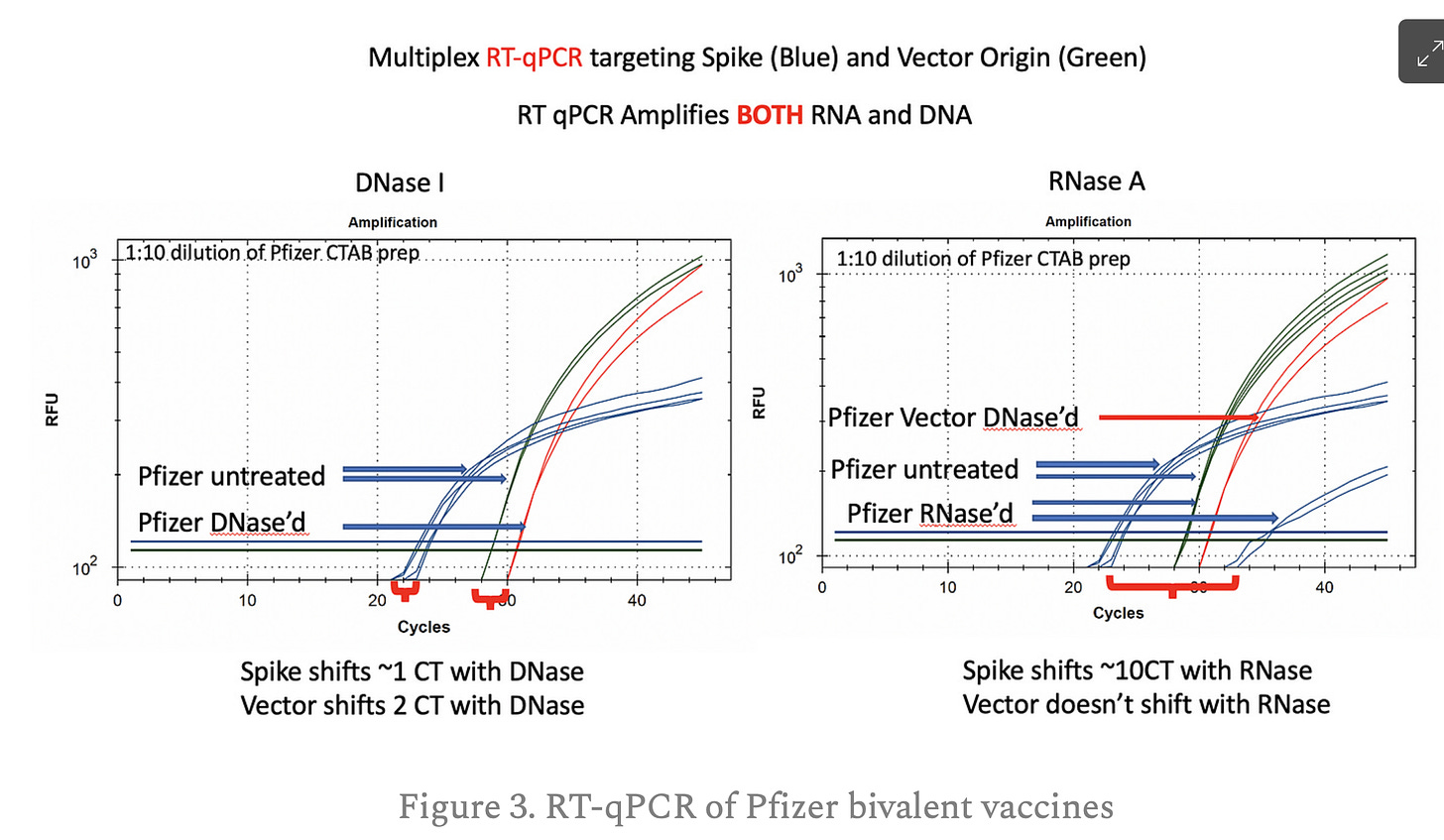
Conclusions
Our first survey of Pfizer monovalent vaccines implies the contamination is also present in these widely distributed vaccines and even the vaccines targeting 5-12 year olds. Preliminary assessments of the CT offset between the Spike RT-qPCR and the Vector RT-qPCR demonstrates a 7 CT offset which equates to a 128 fold difference (2^7) between the spike nucleic acids and the vector nucleic acids. The vector should be predominantly DNA as the techniques used to isolate the plasmid out of E.coli prior to the T7 IVT reaction should eliminate vector RNA.
These CTs will be further refined with DNase and RNase studies to assess if there is any vector RNA contributing to the 19 CT signal (Red figure 2). This will be followed up with genome sequencing to assess vector purity. For vaccines to be below the 330ng/mg EMA specification, we should expect to see a 11-12 CT (2^11 – 2^12) offset between the DNA and the RNA.
qPCR and RT-qPCR in this study provide relative ratios of nucleic acids. Absolute quantitation will require multiple methods such as the use of Agilent gel electrophoresis, Qubit fluorometry or more standard curves used in qPCR.
More vials need to be surveyed. These vials were unopened, however, they are 1 year old and we know very little of their storage conditions. It is possible poor storage would adversely impact RNA more readily than DNA and narrow the CT offset between the two measurements, however these CT offsets (5-7CTs) are similar to what is seen with the bivalent vaccines which have been exposed to less shelf life.
**Source: DNA contamination in Pfizer monovalent vaccines
